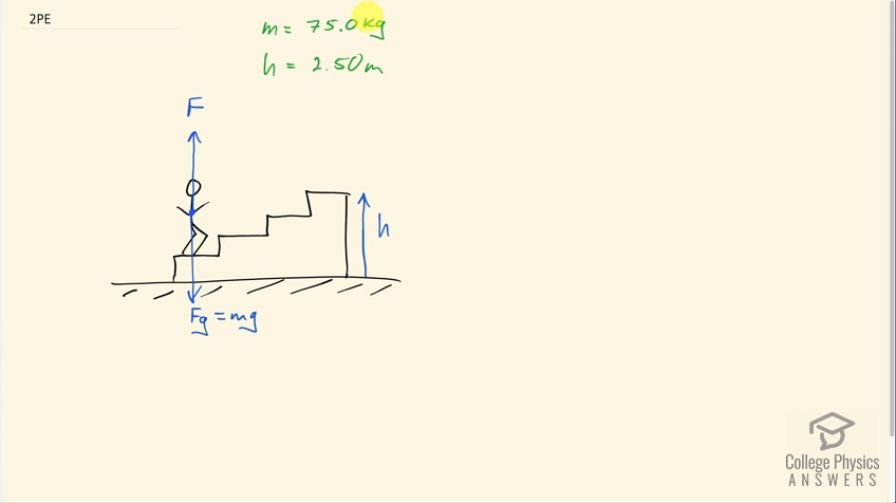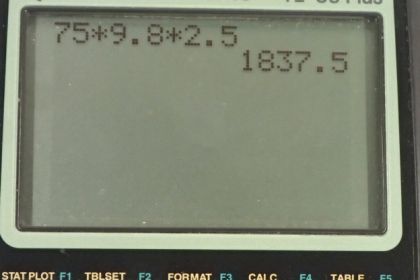Solution video
OpenStax College Physics, Chapter 7, Problem 2 (Problems & Exercises)

Calculator Screenshots
Comments
Hi Shaun,
How do we find the angle for this equation. Since in the book W= F*D* (Cos angle)?
Hello phillip and samuel, thanks for the question. There is a simplifying assumption here that the direction of force applied is straight up. Granted, the person would have exerted a horizontal force in the beginning to initiate the horizontal component of their motion, but that was for a brief moment before we begin our analysis. There is no horizontal friction, and there is no horizontal acceleration, so the person doesn't need to exert a horizontal force after that initial, ignored, moment. OK - the person exerts a force straight up. Next we need to think about the direction of their displacement, which is the in . Strictly speaking, it's on an angle above horizontal to the right - it's along the stairs in other words. Suppose we knew that angle, and let's call it since it isn't quite the correct angle to use in the work formula, what would we do with it? Keep in mind this is the angle between displacement and horizontal. We would find the angle between the force and the displacement (since that's the angle in the formula), and . Having now found we could multiply it by the displacement, as suggested by , and then get our answer, and if I'm understanding correctly, your question is - none of this is possible in this question since I don't know the angle, right? Well, the angle isn't necessary. Consider, hypothetically, that you do finally have and you multiply the cosine of it by the displacement, what does that give you? It gives the vertical component of the displacement. We already know the vertical component of the displacement - it's the height of the stairs! That's something we already know, so we can carry on without needing the angle. Work is the force multiplied by the component of displacement that's in the same direction as the force - that's the meaning of .
Hope this helps,
Shaun



